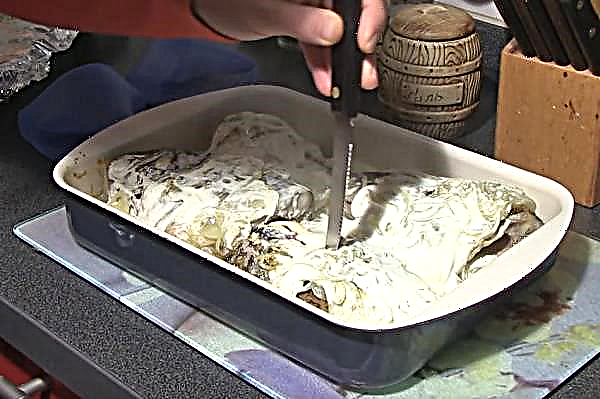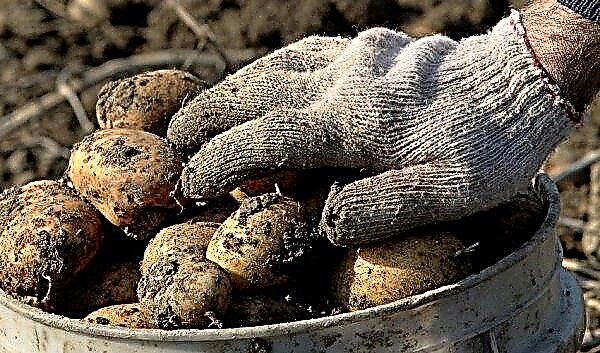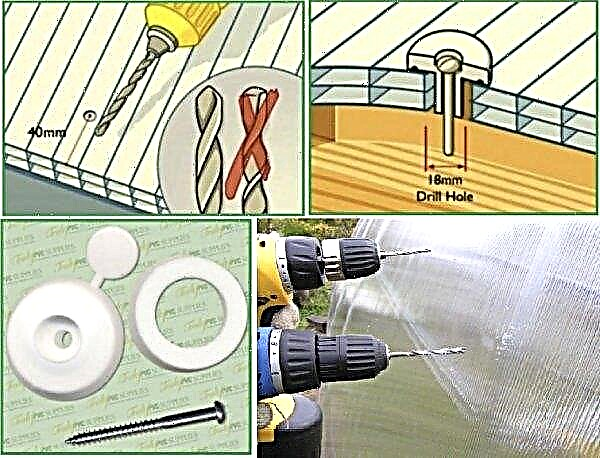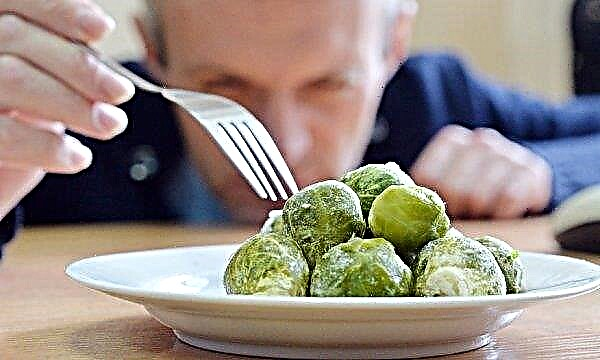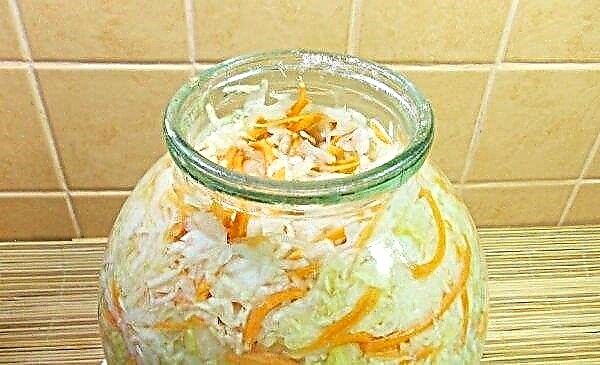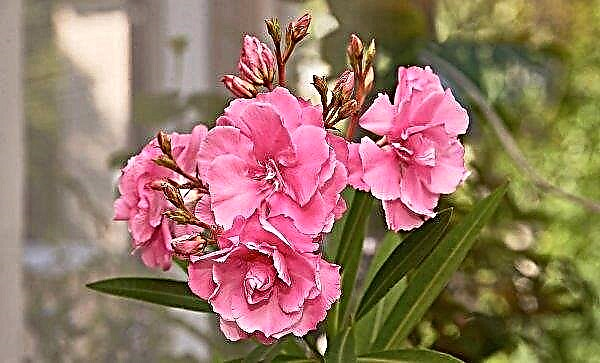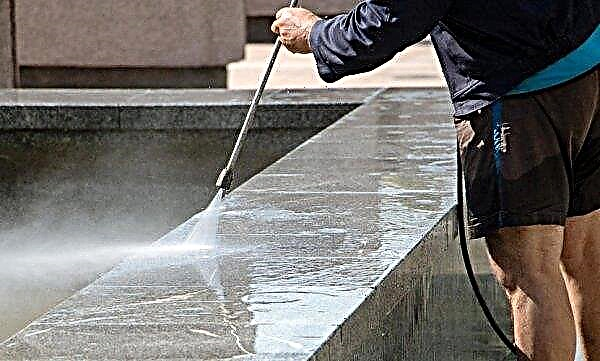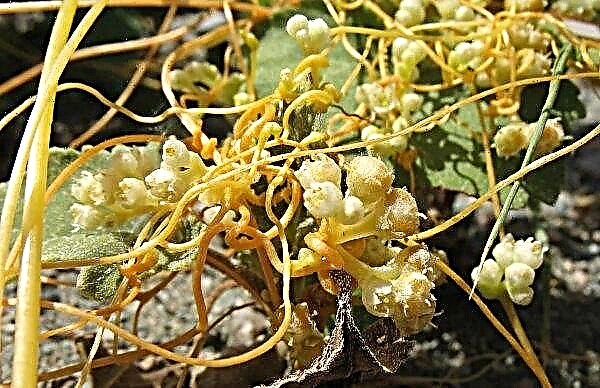The quality of the beet crop largely depends on the correctness of sowing in the spring. When and how to sow beets in open ground, read below.
When to plant beets in spring in open ground
Beet propagation occurs by seed.
When landing, it is important to consider:
- calendar dates:
- weather;
- climate of a specific region.
Did you know? In the Mediterranean, for a long time, only beet tops were eaten, and root crops were used for medicinal purposes. Cultivate plants in this area began back in I–II c. BC e.
Calendar dates
As a standard, beet seeds are sown in open ground in mid-May. But if weather conditions do not allow, the sowing period may shift. With a later planting, the quality of the crop does not decrease, but planting too early, when it is still cold outside, provokes bloom.
Weather
Sowing beet seeds can be carried out when the soil is warmed up to + 8 ° C to a depth of 6 cm. An earlier planting is fraught with freezing of planting material and a complete absence of seedlings.
The higher the air temperature, the faster the shoots will appear:
- +3 ... + 5 ° С - 25 days;
- +6 ... + 8 ° С - 10-15 days;
- +11 ... + 18 ° С - 7 days;
- + 20 ° C and above - 5 days.
Region features
Sowing dates also depend on the climatic conditions of the growing region:
- Ukraine is the first decade of May.
- The south of Russia is the first decade of April.
- Moscow Region - mid - end of May.
- Siberia, the Urals - early June.
Preparing beet seeds for planting
The seed preparation process begins with calibration. First, the seeds are sorted by size, picking the largest. After that, the selected seeds are placed in a weakly pink manganese solution. 1 g of substance is added to 1 liter of water at a temperature of + 30 ° C.
After twenty minutes of soaking, the seeds are again discarded, leaving only the specimens that have sunk to the bottom of the tank for planting. Next, soaking for a day in a solution of a growth accelerator or wood ash is carried out. To prepare a solution of wood ash, 1 tbsp is added to 1 liter of water. l substances and mix thoroughly.
Next, soaking for a day in a solution of a growth accelerator or wood ash is carried out. To prepare a solution of wood ash, 1 tbsp is added to 1 liter of water. l substances and mix thoroughly.
Of the growth accelerators, Nitrofosco, Zircon, and Epin are most often used.
Important! Growth accelerator solutions must be diluted immediately before use. They are also not subject to reuse for soaking seeds of other vegetable crops.
After soaking, the seeds must be rinsed under running water and wrapped in a damp piece of cloth. In this form, planting material is maintained at a temperature of +20 ... + 25 ° С for 2-3 days, constantly moistening the tissue.
Technology for planting beets in open ground in spring
Beet is a heat-loving plant, therefore, to accelerate the germination of crops, it is necessary to choose a well-lit southern area. It is also worth considering the rules of crop rotation.
- The best predecessors for this culture are:
- zucchini;
- bow;
- garlic;
- cucumbers
- cabbage;
- legumes.
The soil on the site should be loose, water- and breathable, with a neutral acid reaction in the range of 5.5–6 pH. Site preparation is carried out in the fall. First, a deep (30 cm) digging is carried out, then the soil is treated with Fitosporin (5 g of the drug is added to 10 liters of water).
After a week, 10 kg of compost for each m² are introduced, as well as 10 kg of peat and sand, if the soil is not sufficiently loose, and again loosen it. In the spring, a month before planting, they again cultivate to a similar depth, add 10 kg of compost and 300 g of wood ash per m². Processing "Fitosporin" is carried out a week before planting.
In the spring, a month before planting, they again cultivate to a similar depth, add 10 kg of compost and 300 g of wood ash per m². Processing "Fitosporin" is carried out a week before planting.
The sowing rate of 10 m² is 16–20 g.
Sowing depth depends on soil structure:
- for light soils - 3-4 cm;
- for heavy - 2-3 cm.
Sowing is carried out in trenches located at a distance of at least 30 cm from each other. The bottom in the furrows is slightly compacted, after which the planting material is laid out. Seeds cover with a layer of 0.5 cm of soil mixed with humus. Then a layer of sand mixed with peat is laid. After planting, the aisles are mulched with peat or humus.
Important! If sowing is carried out late, then the furrows should first be watered. Water consumption per linear meter 3-5 liters depending on soil moisture.
Beetroot care after planting
The main care for planting beets in the open field is to maintain moisture and loosening.
Watering
Humidification mode is completely dependent on the weather. If there is enough moisture, then watering is not carried out. The main thing is to monitor the degree of soil moisture at the initial stage of development. At first, if moisture is insufficient, sprinkling is carried out daily in the evening.
If the summer turned out to be hot, then for the entire season water is added 2 times, spending 10–20 L of liquid per m². After moistening, the soil must be loosened and weeds removed. The last watering is permissible to carry out a month before the harvest. With abundant watering, the liquid is introduced into the aisles from the hose.
With abundant watering, the liquid is introduced into the aisles from the hose.
Feeding
The first top dressing is introduced after the appearance of the second pair of true leaves. Fertilizers are applied in dry form while loosening the soil. At this stage, compost with wood ash is perfect. 3 m² will be required per m² compost and 2 tbsp. ashes.
If there is a slowdown in the growth of tops, then make a solution of mullein or bird droppings. Manure is bred with water 1:12 and watering the plants is carried out, making sure that the mixture does not fall on the root. It is best for this procedure to dig ditches at a distance of 5 cm from the plant and fertilize it: the flow rate is 10 liters per m².
If fertilizing with slurry is carried out, then top dressing with ash is used a second time.
The second top dressing is introduced before closing the tops in the rows. At this stage, if feeding with ash was carried out, you can use saline solution: add 2 tbsp. To 10 liters of water. ordinary table salt and add liquid to grooves dug at a distance of 5 cm from the plant. Iodized salt cannot be used for this purpose.
Saline can be used not only as root dressing, but also sprayed on a leaf - this will help protect plants from pests such as aphids or fleas.
Thinning
Beets are purposefully sown more densely than required. This move allows you to solve the problem with poor germination of seeds, spoilage of sprouts and their death due to adverse weather conditions. The first thinning procedure is performed with the appearance of the first pair of full leaves. At this stage, a distance of 3 cm is left between the plants, trying to remove weaker germs.
At this stage, a distance of 3 cm is left between the plants, trying to remove weaker germs.
The second thinning manipulation is carried out with the appearance of 5-6 sheets. At this stage, the distance between plants should be 5-6 cm. The last thinning procedure should be carried out before August 15. At this stage, a distance of 8 cm is left between the plants.
Thinning is carried out after moistening the soil. Healthy specimens that had to be removed from the row can be transplanted to another free space on the site.
Did you know? In Russia, beets were used by women as a blush.
Disease and Pest Prevention
The main measures to prevent the occurrence of diseases and pests are:
- high-quality processing of planting material and soil with disinfectants;
- timely feeding;
- control of planting density by thinning;
- regular loosening of row-spacings;
- humidity control.
Features of harvesting and storage of crops
Harvesting beets from the garden begins in the second half of September - early October. The root crop continues to grow and accumulate nutrients until the cold snap to +2 ... + 3 ° С. The maturity of root crops can be determined by the presence of growths in the lower part of the leaf - if they are, you can safely proceed to the harvest. Cleaning is carried out in dry weather. Beet harvesting technology:
Beet harvesting technology:
- Dig vegetables with a shovel.
- Carefully shake the ground off the root crops and leave them on the bed for 2-3 hours.
- Cut the tops cone-shaped.
After pruning, transfer the fruit to a barn with good ventilation. As soon as the slices are tested, you can move the root crops into the basement. Good results are obtained by storing beets next to potatoes. Beetroot absorbs excess moisture secreted by potatoes, which favorably affects the preservation of the quality indicators of both root crops.
Optimal conditions for storing beets:
- air temperature - +3 ... + 6 ° С;
- humidity - 75–80%;
- lack of light;
- the presence of quality ventilation.
Did you know? In ancient Persia, neighbors reported their hostile attitude, secretly tossing beets into each other's houses at night.
Fruits are better preserved if they are treated with chalk or wood ash before storing for storage. In the cellar they can be stored in bulk on a layer of straw or laid out in wooden boxes. Shelf life of beets is 8 months. Proper sowing of beets in the spring in compliance with optimal terms allows you to get a high-quality crop with high rates of keeping quality. When all conditions are met and a favorable microclimate is created in the storehouse, the fruits retain their freshness for 8 months.
Proper sowing of beets in the spring in compliance with optimal terms allows you to get a high-quality crop with high rates of keeping quality. When all conditions are met and a favorable microclimate is created in the storehouse, the fruits retain their freshness for 8 months.


